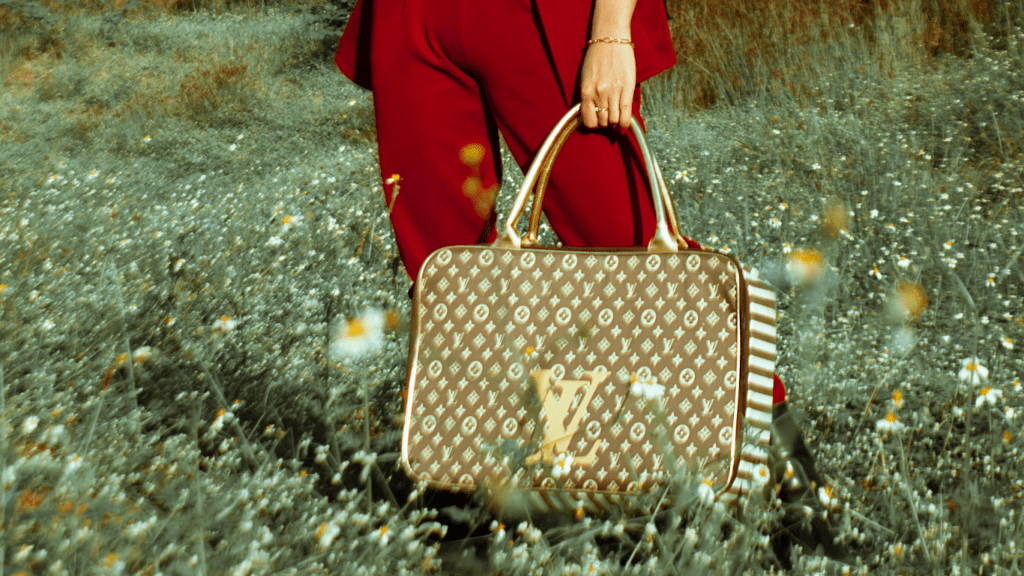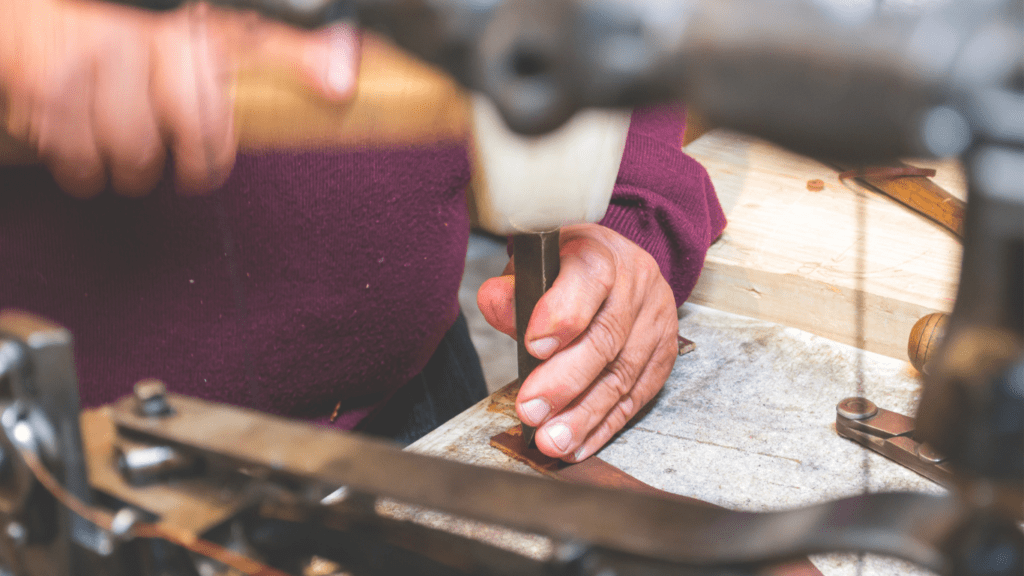History of Hermès
Hermès started as a harness workshop in Paris. Its foundation marked the beginning of an enduring legacy in luxury goods.
Founding and Early Years
Thierry Hermès founded the company in 1837. Initially, he aimed to serve European noblemen with finely crafted horse harnesses. The workshop achieved recognition quickly, earning awards from global exhibitions, which highlighted the brand’s commitment to craftsmanship. By 1879, the business expanded under Thierry’s son, Charles-Émile Hermès, moving to 24 Rue du Faubourg Saint-Honoré, where the Hermès flagship store still resides today.
Evolution Through the Decades
The 1920s ushered in a new era, with Émile-Maurice Hermès steering the brand into accessories and garments. Hermès introduced leather handbags, integrating zippers into their products for the first time in France. The same period saw the launch of the iconic Hermès scarves in 1937, which later became a symbol of luxury.
In the 1950s, Hermès’ focus expanded to include ready-to-wear clothing. The introduction of the Kelly bag, named after actress Grace Kelly, solidified the brand’s position in popular culture. The next decades saw strategic diversification, with Hermès venturing into perfumes, watches, and jewelry. Each product reinforced Hermès’ reputation for meticulous craftsmanship and exclusivity.
By continually evolving while respecting its artisanal roots, Hermès stands as a testament to the intersection of heritage and contemporary luxury.
Mastery of Craftsmanship

The mastery of craftsmanship defines Hermès, setting it apart as a paragon of luxury. It’s evident in every product, reflecting years of tradition and innovation.
Art of Leatherwork
Hermès excels in leatherwork, a skill honed since its inception. The artisans meticulously handcraft bags and accessories, using high-quality leathers sourced from reputable suppliers. Each piece undergoes a rigorous process, ensuring durability and elegance. The Kelly and Birkin bags are prime examples, requiring over 24 hours to complete. Hermès’ dedication to leatherwork transforms these items into timeless pieces of art.
Excellence in Silk Scarves
Hermès’ silk scarves embody elegance and sophistication. Crafted from the finest silk, these scarves pass through numerous meticulous stages before reaching perfection. Skilled artists start with intricate designs, followed by precise screen-printing using up to 27 individual colors. After printing, the silk undergoes hand-rolling and stitching, ensuring impeccable finish. Each scarf is a testament to Hermès’ unwavering commitment to quality and artistry.
Timeless Watchmaking
Hermès elevates watchmaking to an art form. Combining traditional techniques with modern innovation, their timepieces symbolize both precision and luxury. Expert horologists design and assemble each watch, ensuring optimal performance and aesthetic appeal. The Arceau and Cape Cod collections highlight Hermès’ watchmaking prowess, blending unique designs with Swiss precision. These timepieces are not just functional accessories but also sophisticated expressions of craftsmanship.
Iconic Products
Hermès stands out with its collection of iconic products, exemplifying the pinnacle of luxury and craftsmanship. Among these, the Birkin Bag, Kelly Bag, and various scarves and ties hold special prominence.
The Birkin Bag
The Birkin Bag, introduced in 1984, epitomizes luxury and exclusivity. Named after actress Jane Birkin, this bag features high-quality leather and meticulous craftsmanship. Each Birkin takes up to 48 hours to create, emphasizing its exclusivity. Prices can reach $300,000, reflecting its premium materials and intricate design. Limited availability and high demand make it a coveted status symbol. Hermès artisans use only the finest leathers, ensuring every Birkin is unique and long-lasting.
The Kelly Bag
The Kelly Bag, initially known as the Sac à dépêches, gained fame when Princess Grace Kelly used it in the 1950s. This bag embodies elegance and practicality. Crafted from premium leather, the Kelly typically features a single handle, a detachable shoulder strap, and a distinctive turn-lock closure. Its versatility caters to various occasions, making it a favorite among those seeking timeless style. Production can take 18-24 hours, showcasing Hermès’ dedication to perfection. Different sizes and colors cater to diverse preferences, maintaining its status as a timeless wardrobe staple.
Scarves and Ties
Hermès’ scarves and ties are synonymous with sophistication and artistic expression.
- The brand’s silk scarves, introduced in 1937, boast intricate patterns and vibrant colors.
- Each scarf undergoes a lengthy process, from design to screen-printing.
- Approximately 750 hours go into creating a single scarf design, ensuring exceptional quality.
- Hermès ties, made from silk, offer a range of designs suitable for formal and casual settings.
Both scarves and ties embody the brand’s commitment to art and elegance, making them essential accessories for aficionados of refined fashion.
Brand Prestige and Influence
Hermès stands as a beacon of luxury and craftsmanship. Its unwavering commitment to quality has positioned it as a symbol of prestige worldwide.
Celebrity Endorsements
Celebrities frequently endorse Hermès, which amplifies the brand’s prestige. Celebrities like:
- Victoria Beckham
- Jennifer Lopez
- Kanye West
are often seen with Hermès items, exemplifying its desirability. These high-profile endorsements make Hermès a status symbol beyond its inherent luxury.
Cultural Impact
Hermès has shaped cultural trends through its innovative designs. Films, television shows, and books often feature Hermès products, embedding them in popular culture. For instance, the Birkin bag has been a plot point in shows like “Sex and the City,” solidifying its cultural significance.
Market Positioning
Hermès maintains a strategic position in the high-end market. The brand’s limited availability and exceptional quality create an aura of exclusivity. By offering unique, handcrafted products, Hermès ensures it remains a top choice for luxury consumers.
Future of Hermès
Hermès sustains its reputation through innovation and sustainability. The brand ensures its relevance by expanding product lines while maintaining its core values.
Innovations and Sustainability
Hermès continually evolves, integrating innovations in materials and technology. The company invests in renewable energy and eco-friendly practices to minimize its environmental footprint. For instance, it collaborates with various startups to explore sustainable leather alternatives. Corporate social responsibility remains a key focus, with initiatives aimed at reducing carbon emissions and promoting ethical manufacturing.
Expanding Product Lines
Hermès broadens its offerings, introducing new categories while preserving its heritage of craftsmanship. Recent ventures include home goods, fragrances, and ready-to-wear collections. These additions enable Hermès to attract a broader audience, ensuring sustained growth without compromising on luxury. The brand’s strategic expansions, such as the launch of the Petit h collection featuring reimagined materials, exemplify its blend of tradition and modernity.


 Beauty Product & Fashion Brand Reviewer
Elizabethie Vallestiera is Glam World Walk's go-to expert for in-depth beauty product reviews and luxury brand spotlights. With a meticulous approach to analyzing the latest beauty innovations, she ensures that readers are always informed about the best products on the market. Elizabethie’s passion for uncovering the stories behind iconic fashion brands makes her articles not only informative but also captivating, offering a blend of style, substance, and glamour that readers crave.
Beauty Product & Fashion Brand Reviewer
Elizabethie Vallestiera is Glam World Walk's go-to expert for in-depth beauty product reviews and luxury brand spotlights. With a meticulous approach to analyzing the latest beauty innovations, she ensures that readers are always informed about the best products on the market. Elizabethie’s passion for uncovering the stories behind iconic fashion brands makes her articles not only informative but also captivating, offering a blend of style, substance, and glamour that readers crave.
